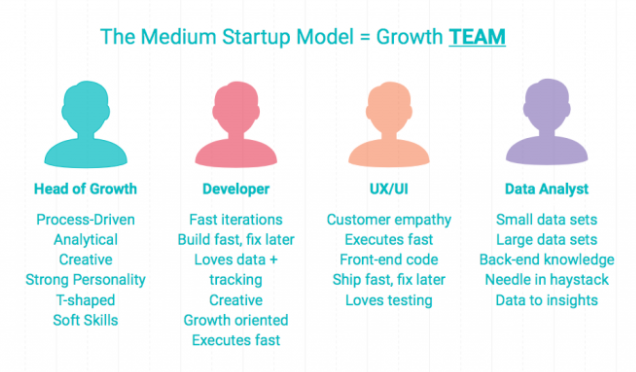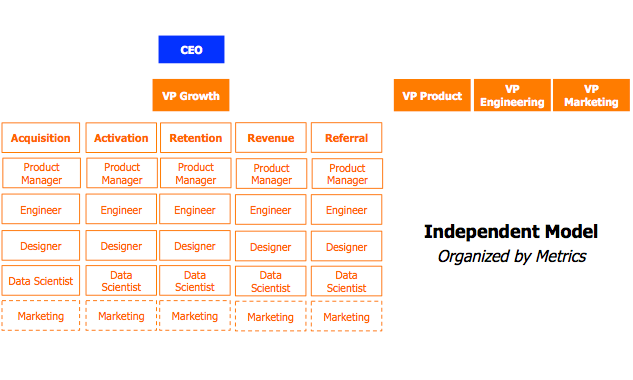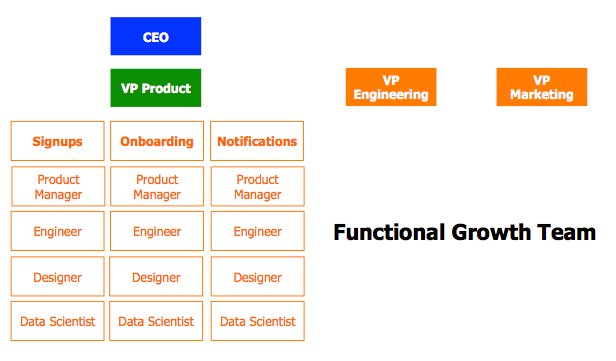Latest news about Bitcoin and all cryptocurrencies. Your daily crypto news habit.

For any new business, solid growth is a priority. And building out a team that can sustain growth and grow with your business is tricky stuff.
There’s a lot of chatter out there about growth hacking and fast tricks; it’s hard to get a handle on how to build out a growth team that’s designed for long-term success.
It doesn’t matter what industry you’re in or how much you love quick fixes — experience has taught me that you need to take a common-sense approach to building out your growth team. It all starts with securing your funding, then identifying the roles you need to hire on, and then welcoming those new hires into a culture than embraces growth for all the right reasons.
Here’s what the experts have to say about each stage of growing your growth.
First things first — get funded
Nobody works for free, and top growth hacking talent is in demand. To hire a growth team, you need money. But traditional business funding is a grindingly slow and challenging process. It’s also infamous for a lack of transparency, in a system designed to benefit the lenders, not the borrowers.
To get growing quickly, you’ll need to consider all your alternative financing options, which can be overwhelmingly challenging to do in an industry that loves to make things vague and opaque.
Leo Kanell, alternative funding expert and co-founder of Fundwise Capital, believes small businesses can piece together viable financing from a variety of sources, and they should be able to do so as fully informed consumers.
“Understanding how to get unsecured credit can be such an important tool to get you where you want to go,” he explained in a recent case study with Kajabi, the platform that Fundwise uses to publish its educational materials. On Fundwise’s site, you can learn about unsecured funding options like 0% loans, revolving lines of credit, term loans, as well as traditional lines of credit and SBA loans. So you might not need to resort to a shady ICO or groveling for VC injections after all.
Take the time to really investigate your funding options and create a solid funding plan.
Who’s on your growth team?
Once you’ve got a liquid budget, it’s time to focus on building the team. Start by identifying the key members you’ll need.
“The following seven roles all need to be accounted for, though in some organizations, individuals may cover multiple spots, while others will have several people devoted to each function,” advises noted growth expert Sujan Patel.
He recommends companies start with these roles:
- data analyst
- VP of marketing
- content marketer
- social media and community manager
- growth hacker
- project manager
- full stack developer
Note that he’s omitted pyrotechnics expert from the seven-person roster for some reason. The roles may overlap and expand as you grow, but this will get you a solid base. And as you grow, Patel reminds us that growth does not necessarily always overlap with marketing.
“In my time working in marketing, some of the biggest, most impactful changes I’ve made haven’t been campaigns I’ve launched — they’ve been changes I’ve made to the product and its supporting services after working closely with sales teams, support teams and product teams,” Patel explains.
To make these kinds of iterative growth discoveries, it’s important to train your team members as users. By actively working the process, they often discover seemingly small yet powerful ways to move the needle. Leverage these moments by creating a process where your entire team engages in the user experience.
The right people in the right roles
As you build your team, keep in mind that each role has a distinct personality fit. For example, GrowthTribe’s Esther Dalkmann advises you look for a head of growth who is “a risk taker, analytical, creative and a bit of a villain …with skills ranging from full-stack development to persuasive copywriting and data mining.”
Your data analyst, on the other hand, “loves soft data (qualitative information that explains the ‘why’ of the hard data) and is able to find actionable insights within it,” Dalkmann continues.
Don’t try to force a fit; it will inevitably backfire and set your team back, losing growth momentum in the process.
Defining your growth culture
As you put your team in place, what structure should you use? Growth analyst Andrew McInnes explains the most common options, which can have major implications on your team’s culture.
“In interviewing 20 growth leads, two popular models emerged: the Independent Model and Functional Model,” he writes. “Both are good starting points for how you may want to structure your growth team in the scalable growth phase of your business. This is when the name of the game is up and to the right.”
There are pros and cons to each model, of course, but overall McInnes found more support for the Functional model.
“According to our contributors, when people working on growth initiatives report to functional heads (e.g. Product, Engineering, etc.), other people believe that growth metrics will be achieved the right way,” he explains.
Regardless of which model you subscribe to, you need to build a culture focused on the right type of growth for sustained success. And that requires identifying the key metrics you want to prioritize boosting in any given experimentation cycle. But it also requires keeping an eye on the big picture.
“Bad outcomes are common when companies prioritize — and culturally reward — short-term growth at any cost,” writes growth strategist Chris Bolman. “Think Theranos, early Zenefits, or Uber’s various setbacks. It’s important to have short-term priorities around acquisition or retention — but growth can’t be successful unless it’s sustainable. It’s a long-term process.”
Be aware that tensions between growth and brand are inevitable. As Bolman explains, “No company is perfect, and these tensions surface a lot — the relationship between Growth and Brand, or Growth and other areas of Product — and it’s important to manage them from a place of mutual respect, transparency, and empathy.”
When you’ve established a growth culture based on adding value for the customer, it’s easier to work past those tensions and take advantage of growth opportunities. For example, at Fundwise, Kanell and his team use analytics to understand when and where their users need more information. They respond by breaking out their education into specific products, and offering live application review for users. This makes the user outcome better, which is their ultimate priority to sustain growth.
The big picture of growth is really a lot of little pictures
Sure, an overall strategy and big picture are important, but don’t forget that some of the most important growth opportunities happen in the moment. Listen to the feedback from your customers. Focus on what the customer is telling you — either directly, through social media, or through their behavior data. Then train your team to ask “What’s the next best thing I can deliver to this customer? What would help them take the next step in solving their problem?”
This is where a well-built team meets organic growth and positions your company for sustained success.
How to Build Out Your Growth Team for Sustained Success was originally published in Hacker Noon on Medium, where people are continuing the conversation by highlighting and responding to this story.
Disclaimer
The views and opinions expressed in this article are solely those of the authors and do not reflect the views of Bitcoin Insider. Every investment and trading move involves risk - this is especially true for cryptocurrencies given their volatility. We strongly advise our readers to conduct their own research when making a decision.


